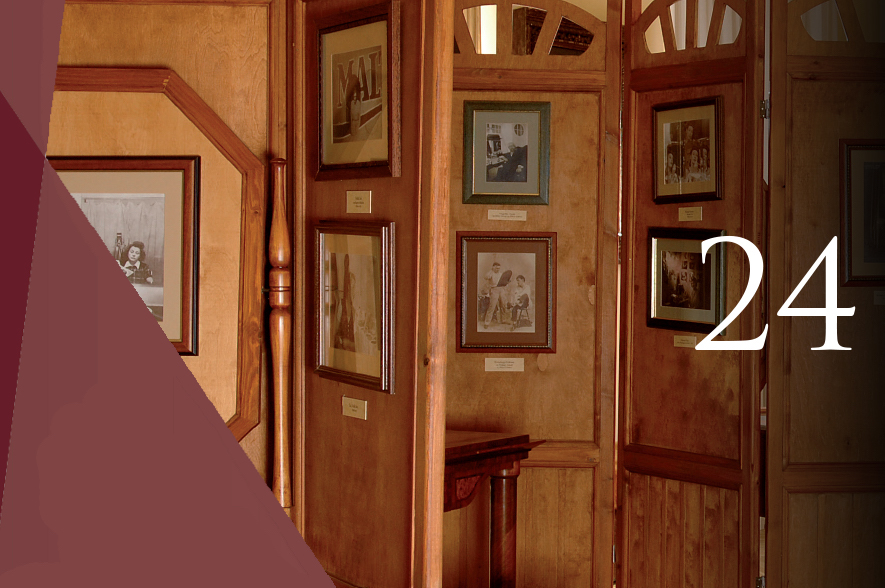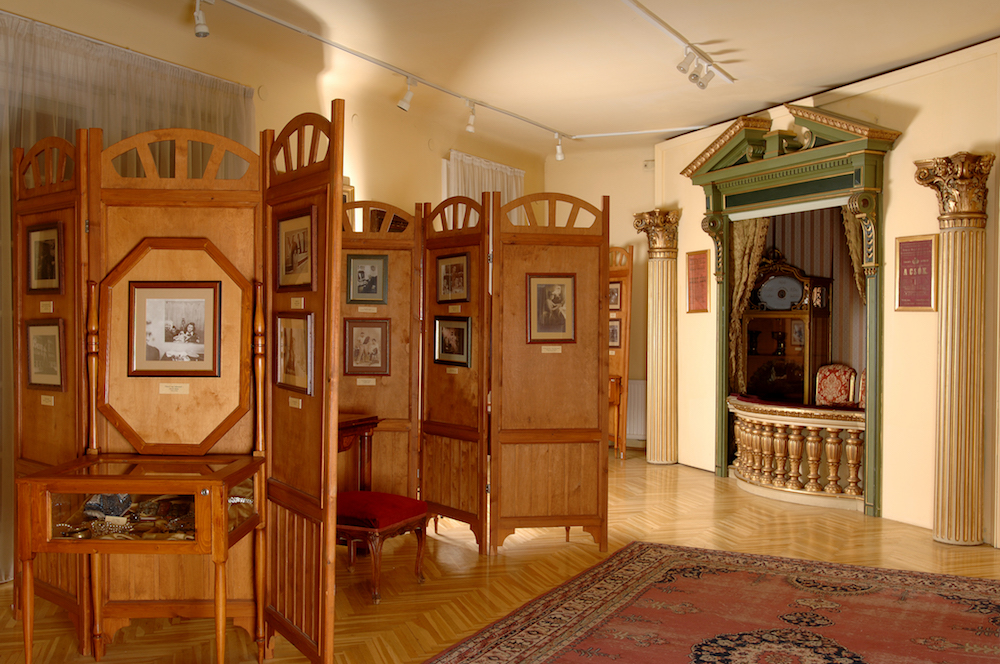
A premier hangulatát meglepően jelenítettük meg ezen a kiállításon. Paseczki Zsolt elkészítette a Népszínház/ Nemzeti Színház királyi páholyának rekonstrukcióját, az öltözők mondénabb világa is megelevenedik. Jelmezek, kellékek, színpadi ékszerek láthatók nappali fényben.
A bemutatott fényképeken Kiss Manyi „gyorsöltözik”, Bajor Gizi sminkel vagy parókát tesz, Karády Katalin az öltözőjét elborító virágokat csodálja, Honthy Hanna kikukkant a vasfüggöny ajtaján. A falakon lévő portrék neves színészeink egy-egy jeles alakításának emlékét őrzik. Beregi Oszkár Antoniusként, Jávor Pál Petrucchióként, Uray Tivadar Hamletként látható.
Az alkotás folyamatát, a szerepértelmezést néhány fotográfia illusztrálja, technikai tanácsok kíséretében. Bárdi Ödön 1928-ban A színjátszás iskolája című könyvében például ezt írta:
„Olyan közel álljunk a székhez, hogy lábunkkal megérezhessük közelségét, és aztán lassan, az egyensúlyra vigyázva ereszkedjünk a székre, hogy a felsőtest, amennyire csak lehetséges, függőleges maradjon.”
A fényes színházi előadások nézői kedvenceiket nem csak a színpadon szerették látni, követni akarták a művészeket mindenhová. Nagyszerű szemlélteti ezt a jelenséget az alábbi hirdetés:
„A színházak nézőterét megtöltő előkelő közönség ideges nyugtalansággal forgatja a Magyar Színpadot. »Ah! mégsem kezdődik az előadás, pedig már egy negyed órája (értsd: két perce), hogy itt vagyunk!« Végre megakad Őnagysága szeme a színlap végébe nyomtatott két soron: Színház után a New York kávéházban találkozunk. A szenvtelen arc egyszerre felderül.”
The Premiere
The atmosphere of the first night was presented in a surprising way in the exhibition. Designer Zsolt Paseczki made a reconstruction of the royal box of the People’s Theatre/National Theatre, and visitors can also take a glimpse into the more mundane world of the dressing rooms. Costumes, props, stage jewellery can be seen in broad daylight.
The presented photos show Manyi Kiss ‘fast dressing’. Gizi Bajor is doing her makeup or putting up a wig, Katalin Karády is admiring all the flowers she had received from the fans. Hanna Honthy peaks out from behind the iron curtain door. The portraits on the walls preserve the memory of one-or-another notable representation by our great actors: Oszkár Beregi as Antony, Pál Jávor as Petrucchio, Tivadar Uray as Hamlet.
The creative process itself, the shaping of a character is illustrated by some photos, together with technical advice. Ödön Bárdi, for instance, wrote in his 1928 book, The School of Acting:
‘Let us stand so close to the chair so that we can feel its closeness with our feet and then slowly, preserving our balance, we will sit on the chair, trying to keep the upper body as straight as possible in the process.’
The spectators of the lustrous theatre performances wished to see their favourites not only on the stage but also wanted to follow the artists everywhere. The following ad is a splendid illustration of this:
‘The noble audience flooding the foyers of the theatres are skimming through Hungarian Stage with a nervous restlessness. »Ah, the show still does not want to begin even though I have been here for a quarter of an hour now (meaning: they came two minutes ago).« The great Miss finally sets eyes on the two small lines at the end of the playbill: After the show meeting at the New York Café. The unmoved face suddenly brightens up.’

